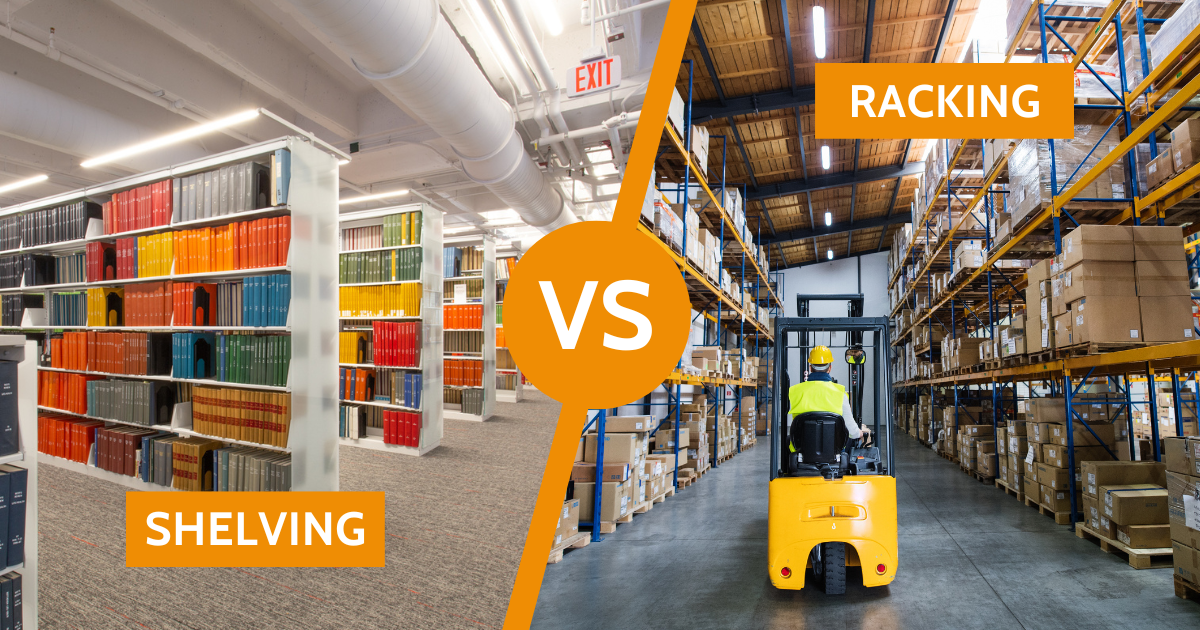
In the world of smart storage, choosing between shelving and racking is crucial for optimizing your workspace. This comprehensive guide will delve into the key distinctions to help you make an informed decision.
Defining the Basics
Shelving involves static, individual units ideal for smaller items. On the other hand, racking is designed to accommodate larger, bulkier goods. When opting for racking systems, it’s crucial to consider the need for a forklift to efficiently retrieve items.
Space Optimization
Shelving excels in maximizing floor space in smaller environments. Meanwhile, the vertical racking design is ideal for warehouses with high ceilings, ensuring efficient use of available space.
Ease of Use & Flexibility
Shelving units provide quick access, while racking systems excel in flexibility, accommodating a range of items. Their design allows easy adjustments to suit changing storage needs in a dynamic business.
Cost Considerations
Shelving is generally more budget-friendly than racking, although its weight-bearing capacity is limited. In contrast, racking boasts greater durability and can withstand heavier loads but it comes with a higher price tag.
Safety Measures
Both shelving units and racking systems have their own set of precautions regarding safety. Although shelving units may not handle heavy loads, designers create them with stability in mind. They often come with features such as anti-tip mechanisms and sturdy construction to prevent accidents.
Alternatively, racking systems prioritize safety by incorporating additional safety measures. These safety measures include safety clips to keep beams secure and guards to stop things from falling off shelves. These precautions minimize the risk of accidents even when dealing with heavier loads.
Installation & Maintenance
Business owners or employees can easily install shelving units if they are under 6 feet tall. They will come with clear instructions and require minimal tools. Maintenance is also simple, with shelf adjustments and occasional tightening of screws being the main tasks.
Racking systems, on the other hand, require professional installation because of their complexity and weight-bearing capacity. Trained technicians ensure proper assembly and secure the system to prevent any structural issues. Maintenance includes regular checks for damage, loose anchors, and making changes to storage as needed.
Aesthetics & Functionality
Racks utilized by machinery demand a higher durability level than shelves accessed manually. These racks hold many layers of palletized goods and need to be strong enough to handle sudden impact from forklifts.
However, shelving doesn’t require the same robustness as racks because of its typically gentler usage. Its design often features an open front to prevent items from slipping out, prioritizing accessibility without compromising safety.
Shelves in stores or offices look nicer with wood, glass, or laminated materials instead of steel beams, safety bars, and mesh.
Consider Your Needs with Shelving vs Racking
As you can see, both shelving units and racking systems have their own advantages and considerations. Businesses should carefully assess their storage needs, budget, and safety requirements before making a decision.
Selecting the appropriate storage is crucial for a warehouse to operate efficiently and stay organized. The choice of storage depends on various factors such as quick access, flexibility, load-bearing capacity, and durability. Contact us for customized storage solutions that match your business goals.

